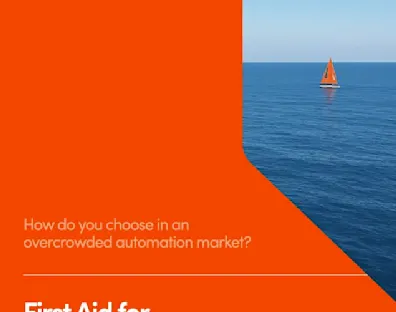

Karsten Marijnissen
Ecommerce Director
4 min read
23 October 2025
Why AI pilots often fail (and how you can prevent it)
In reponse to an endless stream of promising AI stories, in many boardrooms the phrase echoes: “We need to do something with AI!” The FOMO is real. But here’s the problem: the vast majority of AI pilot projects fail. In fact, research from MIT shows that 95% of pilots collapse. Why is that?
All too often, AI is treated as a purely technical playground. A model here, a chatbot there. But in practice, it’s about much more: data, the right tools, processes. And: people. And that last group is often forgotten.
The AI hype: full throttle or hard brakes
I see roughly two types of companies:
- Full throttle. C-level feels the hype pressure and wants to implement AI as fast as possible. There’s plenty of enthusiasm, but often faster than the organisation can handle. Data is a mess, processes aren’t streamlined, employees aren’t involved. Result: a pilot that collapses into chaos.
- Hard brakes. Other executives are paralysed. They don’t understand the technology, fear job losses or reputational risks, and decide: “We’ll do nothing. Except maybe Copilot, that’s allowed.” That also leads to stagnation.
AI is not just a tool, it’s a colleague
Launching an AI agent is like hiring a new employee. You don’t expect someone to know everything on day one. It takes months (sometimes years) for an employee to understand product knowledge, processes, and customer context. AI works the same way: it needs to be trained before it performs well. It requires ‘context’.
But where does that domain knowledge come from? From documents, yes—but mainly from the heads of your people. If you don’t unlock that knowledge, your agent will make mistakes or (worse) hallucinate. That gives you a digital salesperson who can only answer half of the questions. And that instantly undermines customer trust.
No buy-in, no success
Another reason pilots fail: no buy-in. A COO gets the task to “do something with AI” but without a clear strategy or top-level support. Or a working group is formed that’s just as clueless.
On top of that, employees might feel fear. What does AI mean for my job? How will my work change? If you introduce AI with the message “we’re transforming the entire company”—without context or guidance—it sparks resistance.
That’s why communication and change management are just as critical as the tech itself. Successful companies take their people along for the journey: explain first, then experiment together, and only then scale up.
Tooling: choose smart, not fast
Another pitfall: the wrong tools. There are hundreds of vendors promising their solution can do it all. But not every AI tool is fit for customer contact, order processing, or compliance checks.
An AI that processes compliance issues autonomously must be nearly flawless (99% accuracy). For marketing purposes, it can be less strict. The difference comes down to tooling and integrations: CRM, commerce platforms, compliance systems.
The check you should always do: how would an employee handle this process? If you can’t answer that properly and consistently, neither can your AI.
Why failure can be good
Still, a failed pilot isn’t always bad. It exposes what’s missing to truly become AI-ready. Sometimes you discover your data isn’t clean, your processes are too complex, or that your Copilot deployment simply isn’t enough. See a pilot not as an end goal, but as a reality check.
The 5% of pilots that do succeed have one thing in common: they involve an external partner who knows the pitfalls. Because AI is not plug-and-play—it’s a craft.
The success formula: 50% people, 50% tech
Making AI work is about balance. You need top technology, but also the knowledge, experience, and involvement of your people. That’s the formula: 50% people, 50% technology.
Companies that understand this turn AI from a gimmick into a strategic accelerator. And that’s when you see real value emerge: better customer experiences, faster sales processes, and employees with more time for what truly matters.
Want AI to actually work for you?
Avoid ending up in the 95% of failed pilots. Start small — but start right: with the right data, processes, and people ready to make the shift.
In March, we’ll show you exactly how — at IncentroCon Agentic ’26.
👉 Join me at this event and discover how to move from experiment to impact.

4 min read
BOAT is not a Swiss army knife, and that’s a good thing

6 min read
Your colleague doesn’t know the answer. But your AI search engine does.

1 min read
Choosing tools in an overcrowded automation market

4 min read
The character of AI: Why does ChatGPT feel different from Claude or Gemini?
